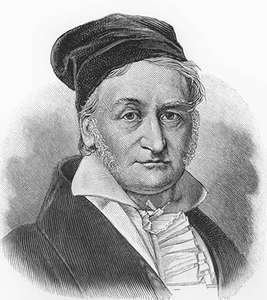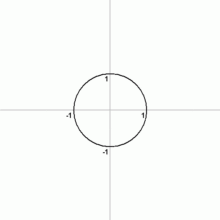Gauss: Amazing Math Hero

Carl Friedrich Gauss is absolutely one of my favorite mathematicians of all time, contributing to a wide variety of fields. For my money he's in the top 3, but by any objective measure he should be considered among the brightest lights in the history of Mathematics.
Guass made important contributions to geometry, number theory and much more - even astronomy! Read on for some of the highlights of the amazing body of work he produced. In fact, he made progres in many areas and never even published the results! He said that proofs should not be published when first discovered, rather one should keep searching for the "best" proof.
Gauss was born in a small city in Germany, which was not a leading center for Mathematics at that time, although he led the ascension of Göttingen University to the top ranks of Math. The leading edge in Mathematics had been the French at that time, after the French Revolution, but Gauss was an extraordinary thought leader, and his students became famous in their own right, like Riemann and Dedekind. His university was the center of the Math world, until the Nazis basically dismantled the department, kicking out the Jewish professors and showing no love to Gauss.
Perhaps the most famous example of his intellect was when he was 8 years old in grade school and his teacher attempted to occupy the children by having them calculate the sum of numbers from 1 to 100. His method was famously to observe that the sum was equivalent to 50 pairs of 101:
(1 + 100) + (2 + 99) + ... + (50 + 51) = 50 * 101 = 5050
His teacher was sufficiently impressed to approach the local bigshot, the Duke of Brunswick to sponsor him. He did so, and continued to do so until his death. Story goes that young Gauss closed the deal by impressing the Duke with a convincing proof that the square root of 2 was not a fraction.
He got a math book that had logarithm tables and a list of prime numbers in the back, and this book set him off on an exploratory journey that is now legendary. He maintained an interest in number theory and prime numbers for the remainder of his life, as do I.
The following year he gained international acclaim by coming up with a construction of a 17 sided regular polygon, along with some important number theoretic discoveries. A regular polygon could be constructed for many small numbers like 3 (isoceles triangle), 4 (square), 5 (pentagon) and others for over two millenia - since the time of the Greeks.But when it comes to prime numbers, a construction was only known for 3 and 5. Gauss not only provided a construction for a 17 sided regular polygon, but demonstrated that this was possible only for five fermat primes - 3, 5, 17, 257 and 65537.
He became interested in the density of primes, as everyone does in number theory, and made contributions for the rest of his life. Some of the most unique and innovative work he contributed had to do with clock arithmetic.
First of all his work with clock arithmetic led directly to what we consider to be modular arithmetic. Conceptually you can imagine a clock showing 9 o'clock. To figure out what time it will be four hours later, you must start counting again after 12. We usually write this as (9 + 4) % 12 = 1.
Modular arithmetic is tremendously important in computer science, since they operate on integers. The set of integers, however, does NOT exhibit the property called closure with respect to division. TL;DR - for integers a and b, the quotient a/b does not always result in another integer. Computers solve this dilemna by spltting the division operator in to two - DIV and MOD, a direct consequence of Gauss' work.
The second important set of results of his work with clock arithmetic was his contributions to number theory. He published Disquisitiones Arithmeticae, a groundbreaking work which included his famous proof of quadratic reciprocity, and it had important results related to prime numbers.
Let me briefly mention a bit of work Gauss did in astronomy. People were trying to figure out the location of an asteroid called Ceres, which was at a point on the other side of the sun, preventing folks from observing. Only a tiny fraction of it's orbit had been observed - not enough for the astronomers to calculate where it might be currently.
Gauss knew it would be on an elliptical orbit, had some candidate orbits, and proceeded to calculate it's actual position. This technique he developed involved determining the conic section from the scant observational evidence, yet it seems like this was just another interesting distraction for Gauss.
He made substantial contributions to other fields of math, including what is now called Gaussian distributions. He did work in the field of magnetism, setting up an innovative lab. His work in curved geometries was astounding, along with his prodigeous student Riemann, and directly contributed to Einstein's findings in General Relativity.
He did so many things that one can barely even mention them all in one article! His notes contained so many other great findings and musings and proofs that were not published during his lifetime, including Fourier transforms, named for the second person to have discovered them. Worst of all, I'm sure I've omitted some incredible work that he did which in and of itself made him a great mathemtician.
Posted from my blog with SteemPress : https://chainwars.one/gauss-amazing-math-hero/
